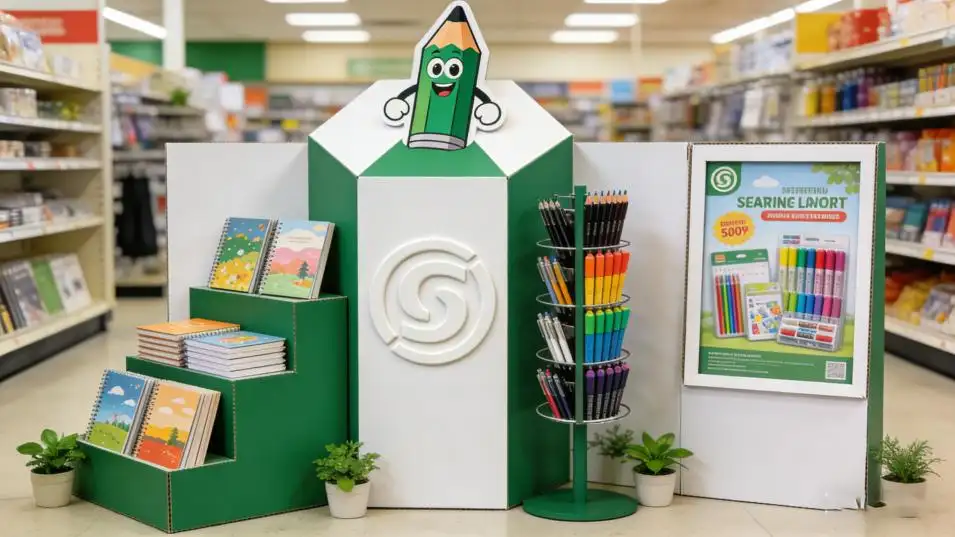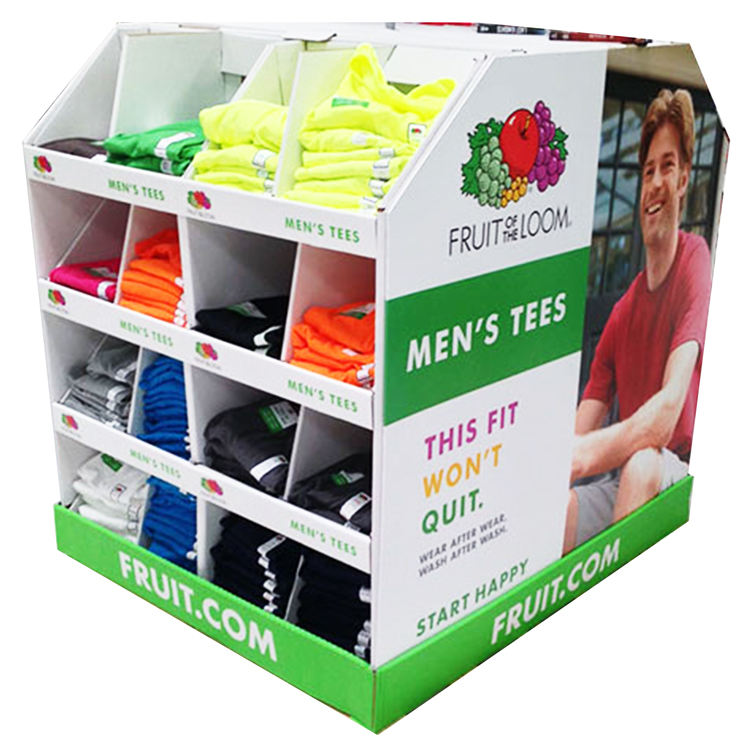Your products are getting mixed up and damaged in their display. This messes up your presentation and hurts sales. Custom inserts are the simple fix you need.
Display compartments, inserts, and dividers are internal structures inside displays and boxes. Their job is to hold, protect, and organize your products. They prevent damage, improve visual appeal, and make it easy for customers to see and select items, creating a clean, professional look.
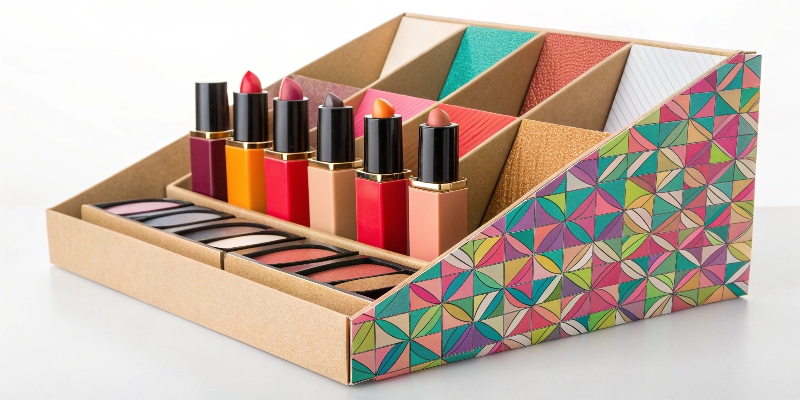
I've seen firsthand how these simple pieces can make or break a product launch. They seem basic, but they are crucial for success. In my 16 years in this business, I've learned a lot about getting them right. They do more than just hold things; they protect your investment and communicate your brand's quality. Let's dig into what makes them so effective and how you can use them to your advantage.
How Do These Components Boost Product Presentation?
Your products get lost in a crowded display, failing to catch the customer's eye. This visual clutter can make your brand look cheap. Inserts create individual spaces, making each item pop.
By giving each product its own spot, inserts and dividers make your display look clean and professional. This organization prevents a jumbled mess, highlights each item, and can make your products seem more valuable. It guides the customer's eye and improves the shopping experience.

Thinking back, I had a client who sold beautiful, small glass jars of artisan jam. In a simple tray display, they just rolled around and looked chaotic. We designed a simple corrugated insert with circular cutouts for each jar. The change was instant. The display went from looking like a clearance bin to a premium boutique shelf. This is the power of good organization. It directly influences how customers perceive your product's value.
Creating a Premium Feel
When each item has its own dedicated compartment, it sends a clear message: this product is important. Think about a high-end box of chocolates or an expensive smartphone. They are never just tossed in a box. The custom-fit insert protects them and makes the unboxing experience feel special. This same principle applies to retail displays. Separation creates visual order and implies quality and care.
Guiding the Shopper's Journey
A well-designed layout can tell a story. You can arrange products by color, size, or type, leading the customer's eye through your offerings. Here’s how inserts make a difference:
| Feature | Without Inserts | With Inserts |
|---|---|---|
| Product Visibility | Items are clustered, hiding one another. | Each item is clearly visible and framed. |
| Brand Perception | Can look disorganized and low-value. | Appears organized, professional, and premium. |
| Customer Interaction | Customers may hesitate to disrupt a messy pile. | Items are easy to see, access, and grab. |
This structure isn't just about looking pretty. It's a strategic tool that elevates your product and makes it easier for customers to decide to buy.
How Do You Choose the Right Material for Inserts and Dividers?
Worried your display inserts won't be strong enough? Flimsy materials can lead to product damage and a cheap-looking display, which hurts your brand's reputation. Let's look at the best material choices.
Choose a material based on your product's weight, shape, and value. Corrugated cardboard is a strong, versatile choice. Paperboard works for lighter items, while foam offers maximum protection. You must balance the cost, the required strength, and your sustainability needs to make the right decision.
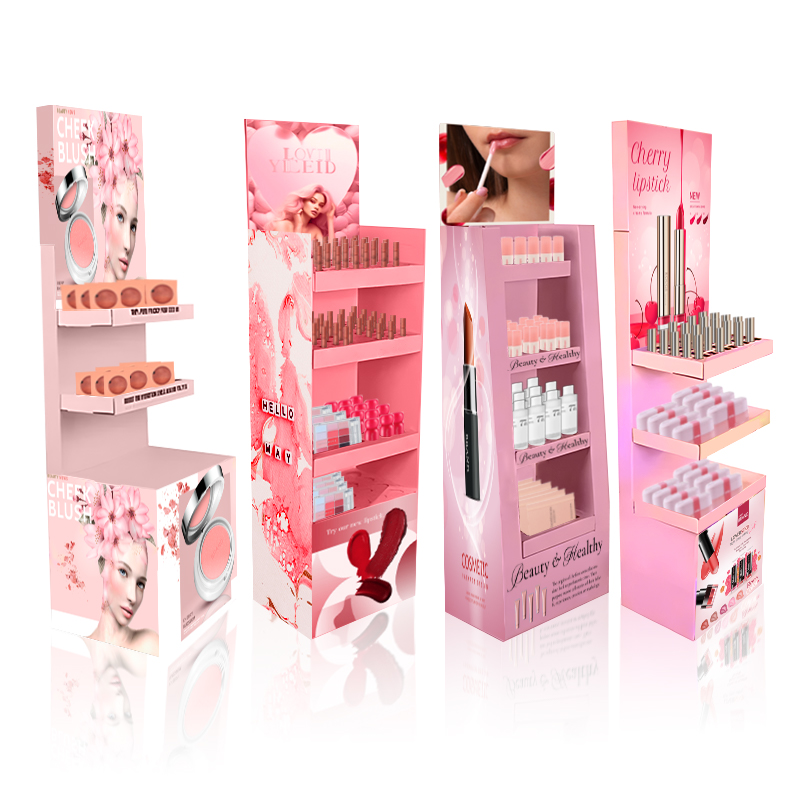
I learned a valuable lesson about materials early in my career. A client wanted the cheapest possible option for shipping glass bottles. We advised against it, but they insisted. The result was a high percentage of breakage during transit. We then switched to a slightly thicker B-flute corrugated insert. The breakage rate dropped to nearly zero. The small extra cost for the better material saved them thousands in lost product and returns. It proved that the right material is an investment, not an expense.
Corrugated Cardboard Grades
Not all cardboard is the same. For inserts and dividers, the 'flute,' or the wavy layer in the middle, is key. E-flute is thin, providing a great surface for printing and is good for lighter items. B-flute is thicker and offers better cushioning and strength, perfect for heavier or fragile products. We often combine them, using a strong outer box and a finer flute for the internal inserts.
Sustainability and Cost
Today, sustainability is a huge factor. Luckily, most cardboard options are excellent in this area. They are often made from recycled content and are fully recyclable. When comparing materials, consider the entire lifecycle.
Here is a quick guide to common materials:
| Material | Best For | Pros | Cons |
|---|---|---|---|
| E-Flute Corrugated | Small, light to medium-weight products. | Great print surface, good structure, cost-effective. | Not for very heavy or fragile items. |
| B-Flute Corrugated | Heavier products, shipping boxes. | Excellent strength and cushioning. | Thicker, less refined look than E-flute. |
| Paperboard | Very light items like cosmetics or cards. | Smooth finish, highly printable, low cost. | Offers minimal protection, not very strong. |
| Molded Pulp | Fragile items, electronics. | Excellent protection, very sustainable. | Higher initial mold cost, rough texture. |
Choosing the right material from the start saves you headaches and money down the road.
What Are Key Design Tips for Effective Compartments?
Your custom-designed inserts are a nightmare to assemble or don't hold the product securely. This wastes time and money, and the final display looks sloppy. Let's cover key design tips.
Design for a snug fit that securely holds the product without being too tight. Keep assembly simple with easy-to-understand interlocking pieces. Ensure the dividers are high enough for support but low enough to show off the product. Always, always create and test a physical sample first.
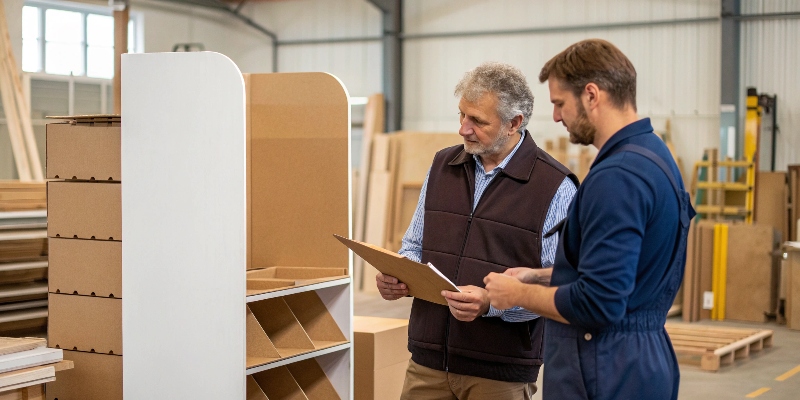
I’ll never forget a project for a new vape pen brand. The designer created a very complex, futuristic-looking insert. It looked amazing on the computer screen. But when the displays arrived at the stores, the staff couldn't figure out how to fold them. It took them 20 minutes per display. We quickly redesigned it with a simple interlocking system. Assembly time dropped to under two minutes. The lesson? A brilliant design is useless if it's not practical for the people who have to build it.
The "Finger Space" Rule
This is a small detail that makes a huge difference. You must leave enough space around the product for a customer to easily get their fingers in and lift it out. If it’s too tight, customers might damage the product or the display trying to get it out, or they might just give up. I always check for this when reviewing a new prototype. It's critical for a good user experience.
Designing for Assembly
Your inserts will likely ship flat and be assembled in a store or warehouse. Time is money for retailers. A smart design uses simple folds and interlocking tabs that are intuitive. We often include a one-page instruction sheet with simple diagrams. For very large rollouts, we might even create a short assembly video accessible via a QR code. This helps ensure the final display looks exactly as you intended.
Maximize Brand Real Estate
Don't forget that the inserts and dividers themselves can be printed on. This is extra space to reinforce your brand. You can use a solid brand color, a subtle pattern, or even small messages. It’s a simple way to make your display look more custom and professional, tying the entire presentation together from the outside to the very inside.
Conclusion
Inserts and dividers are vital for product protection, organization, and presentation. Choosing the right materials and focusing on smart, practical design will elevate your brand and improve the customer experience.



